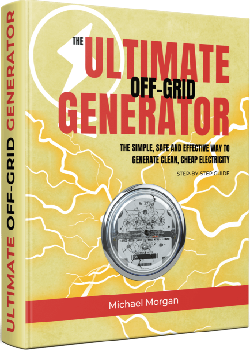"Bad Credit" Credit Cards: How You Can Avoid High Fees
Bad credit can be a challenging situation to navigate, especially when it comes to accessing credit. Traditional lenders often deny loans or credit cards to those with less-than-perfect credit scores, making it difficult for individuals to rebuild their creditworthiness. However, "bad credit" credit cards, also known as subprime credit cards, offer a potential solution. These cards are designed specifically for people with poor credit scores, providing an opportunity to rebuild credit over time. However, they often come with high fees that can make them less appealing. In this article, we'll explore what "bad credit" credit cards are, why they have high fees, and most importantly, how you can avoid these fees to make the most out of your credit card experience.
Understanding "Bad Credit" Credit Cards
Before diving into how to avoid high fees, it's crucial to understand what "bad credit" credit cards are. These cards are specifically designed for individuals with low credit scores, typically below 600. Unlike secured credit cards, which require a deposit to secure the credit line, "bad credit" credit cards are usually unsecured, meaning no upfront collateral is needed. However, this unsecured nature makes them riskier for lenders, leading to the imposition of high fees and interest rates to mitigate the risk.
While these cards can be a lifeline for those struggling with bad credit, they can also be a financial trap if not used wisely. The key is to manage these cards effectively, making on-time payments, keeping balances low, and avoiding unnecessary fees.
Why Do "Bad Credit" Credit Cards Have High Fees?
"Bad credit" credit cards often come with a variety of fees that can quickly add up, making them expensive to maintain. Here’s a look at some common fees associated with these cards:
Annual Fees: Many "bad credit" credit cards charge an annual fee just for having the card. This fee can range from $25 to $100 or more, depending on the card issuer.
Application Fees: Some cards charge a fee just to apply, regardless of whether you're approved or not. This fee can be as high as $50.
Monthly Maintenance Fees: In addition to annual fees, some cards also charge a monthly maintenance fee, which can range from $5 to $15 per month.
High-Interest Rates: Interest rates on "bad credit" credit cards are often much higher than those on cards for individuals with good credit. It's not uncommon to see APRs (Annual Percentage Rates) ranging from 20% to 30% or more.
Late Payment Fees: If you miss a payment, you can expect to pay a hefty late fee, which can be as high as $40 or more.
Balance Transfer Fees: If you transfer a balance from another card, you may be charged a fee, typically 3% to 5% of the amount transferred.
Foreign Transaction Fees: If you use your card internationally, you may be charged a foreign transaction fee, usually around 3% of each transaction.
These fees can quickly accumulate, making it difficult to manage your debt and potentially worsening your financial situation. However, with careful planning and smart decision-making, it's possible to avoid or minimize these fees.
How to Avoid High Fees on "Bad Credit" Credit Cards
While "bad credit" credit cards do come with higher fees, there are several strategies you can employ to avoid or reduce these costs. Here are some practical tips:
Choose a Card with No Annual Fee or a Low Annual Fee
One of the easiest ways to avoid high fees is to choose a card with no annual fee or a low annual fee. While these cards may be harder to find, they do exist. Some secured credit cards, for example, offer no annual fee while still helping you build credit. When shopping for a card, compare different options and look for one with minimal fees.
Pay Your Balance in Full Every Month
Interest charges are one of the most significant costs associated with credit cards. To avoid paying interest, make it a goal to pay your balance in full every month. By doing so, you can avoid the high-interest rates that come with "bad credit" credit cards. If paying the full balance isn't possible, try to pay more than the minimum amount due to reduce the amount of interest you're charged.
Make Payments On Time
Late payment fees can be steep, so it's essential to make your payments on time. Set up reminders or automatic payments to ensure you never miss a due date. Paying on time not only helps you avoid fees but also positively impacts your credit score, which can lead to better credit offers in the future.
Monitor Your Account Regularly
Regularly monitoring your account can help you stay on top of your payments and catch any unauthorized charges. Many credit card issuers offer mobile apps that allow you to check your balance, make payments, and review your transaction history. Keeping a close eye on your account can help you avoid unnecessary fees and charges.
Avoid Cash Advances
Cash advances are another area where fees can add up quickly. Most "bad credit" credit cards charge a fee for cash advances, typically around 5% of the amount withdrawn, along with a higher interest rate on the advance. Additionally, interest on cash advances often begins accruing immediately, with no grace period. To avoid these fees, it's best to steer clear of cash advances altogether.
Consider a Secured Credit Card
If you're struggling to find a "bad credit" credit card with reasonable fees, consider opting for a secured credit card. Secured credit cards require a refundable security deposit, which serves as your credit limit. While this means you'll need to put down some money upfront, secured cards often come with lower fees and interest rates compared to unsecured "bad credit" cards. Additionally, using a secured card responsibly can help you build or rebuild your credit, making you eligible for better credit products in the future.
Look for Cards with Grace Periods
A grace period is the time between the end of your billing cycle and your payment due date. During this period, you can pay off your balance without incurring interest charges. Not all "bad credit" credit cards offer a grace period, so it's important to read the terms and conditions carefully. If your card has a grace period, take advantage of it by paying your balance in full during this time.
Negotiate with Your Card Issuer
If you're facing high fees or interest rates on your "bad credit" credit card, consider negotiating with your card issuer. While there's no guarantee that they'll agree to lower your fees, it's worth asking. If you've been a responsible customer and made your payments on time, you may have some leverage. Additionally, if you receive a better offer from another credit card issuer, you can use that as a bargaining tool to negotiate better terms with your current card issuer.
Use Your Card Sparingly
To minimize fees and interest charges, consider using your "bad credit" credit card sparingly. Use it only for small purchases that you can easily pay off each month. This strategy allows you to build credit without racking up significant debt or fees. Remember, the goal of a "bad credit" credit card is to improve your credit score, not to accumulate more debt.
Take Advantage of Credit Monitoring Services
Many credit card issuers offer free credit monitoring services that can help you keep track of your credit score and identify any potential issues. By monitoring your credit regularly, you can stay informed about your credit progress and make adjustments as needed. Additionally, some services provide alerts when your credit score changes or if there's suspicious activity on your account, helping you avoid potential fees or fraud.
Understand the Terms and Conditions
Before applying for a "bad credit" credit card, make sure you fully understand the terms and conditions. Read the fine print to know what fees and interest rates apply, and be aware of any penalties for missed payments or other violations. Understanding the terms of your credit card agreement can help you avoid unexpected fees and charges.
Consider Alternatives to "Bad Credit" Credit Cards
If you're concerned about the high fees associated with "bad credit" credit cards, consider exploring alternative options for rebuilding your credit. For example, you might consider a credit-builder loan, which is a small loan designed to help you build credit. With a credit-builder loan, the money you borrow is held in a savings account until you pay off the loan, at which point you receive the funds. These loans often come with lower fees than "bad credit" credit cards and can be an effective way to improve your credit score.
Another alternative is becoming an authorized user on someone else's credit card account. If you have a family member or friend with good credit who is willing to add you as an authorized user, you can benefit from their positive credit history. Just be sure that the primary cardholder is responsible with their credit, as any negative activity on their account could impact your credit score as well.
Build an Emergency Fund
One of the reasons people turn to "bad credit" credit cards is to cover emergency expenses. However, relying on a high-fee credit card for emergencies can lead to more financial strain. To avoid this, focus on building an emergency fund. Even a small emergency fund can help you cover unexpected expenses without resorting to high-cost credit. Aim to save at least $500 to $1,000 in a separate savings account that you can access in case of an emergency.
Seek Financial Counseling
If you're struggling with bad credit and finding it difficult to manage your finances, consider seeking help from a financial counselor. Many non-profit organizations offer free or low-cost financial counseling services that can help you create a budget, manage your debt, and improve your credit score. A financial counselor can also help you explore alternatives to "bad credit" credit cards and provide guidance on how to avoid high fees.
Keep Track of Your Credit Score
Finally, keep track of your credit score regularly. As your credit score improves, you'll have access to better credit cards with lower fees and interest rates. By staying informed about your credit score, you can make strategic decisions about when to apply for a new credit card or negotiate better terms with your current card issuer.
"Bad credit" credit cards can be a valuable tool for rebuilding your credit, but they often come with high fees that can be challenging to manage. By understanding the common fees associated with these cards and implementing strategies to avoid them, you can make the most of your credit card experience while improving your financial situation. Remember, the key to success with a "bad credit" credit card is responsible use—making on-time payments, keeping balances low, and avoiding unnecessary fees. With careful planning and a commitment to improving your credit, you can gradually work your way to better credit offers and a stronger financial future.
About the Author: Earnest Sherrill
Earnest Sherrill is a passionate outdoor enthusiast and writer who resides in the warm and breezy state of Texas. With a deep love for nature, Earnest enjoys exploring the great outdoors and sharing his experiences through his writing. He writes about various aspects of outdoor life and the intriguing happenings of everyday experiences. When not writing, Earnest cherishes spending time with his youngest grandchildren, who bring vibrant energy and robust attitudes to his life. Stay connected with Earnest to discover more about the wonders of the outdoors and the joys of life's adventures.
Earnest Sherrill is not only an outdoor enthusiast but also a skilled financial planner. He combines his passion for the outdoors with a deep understanding of personal finance, offering practical and insightful advice to help individuals achieve financial stability and success.








